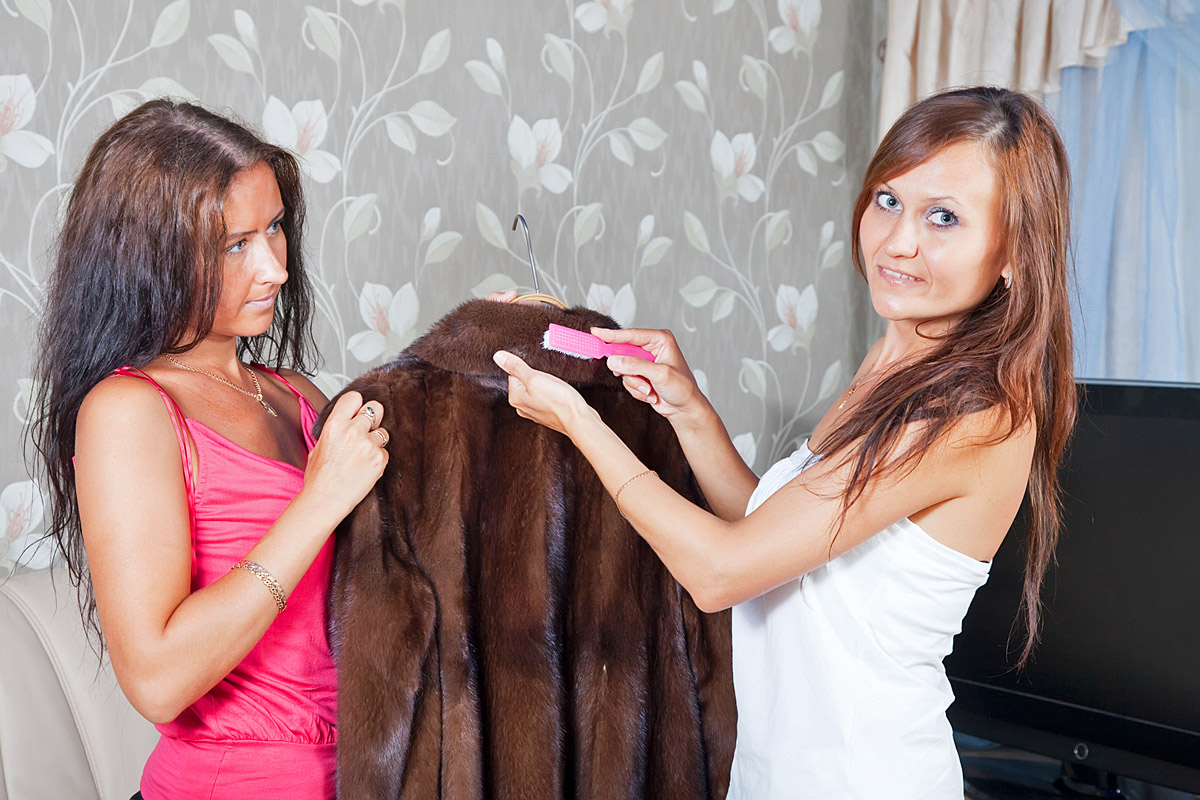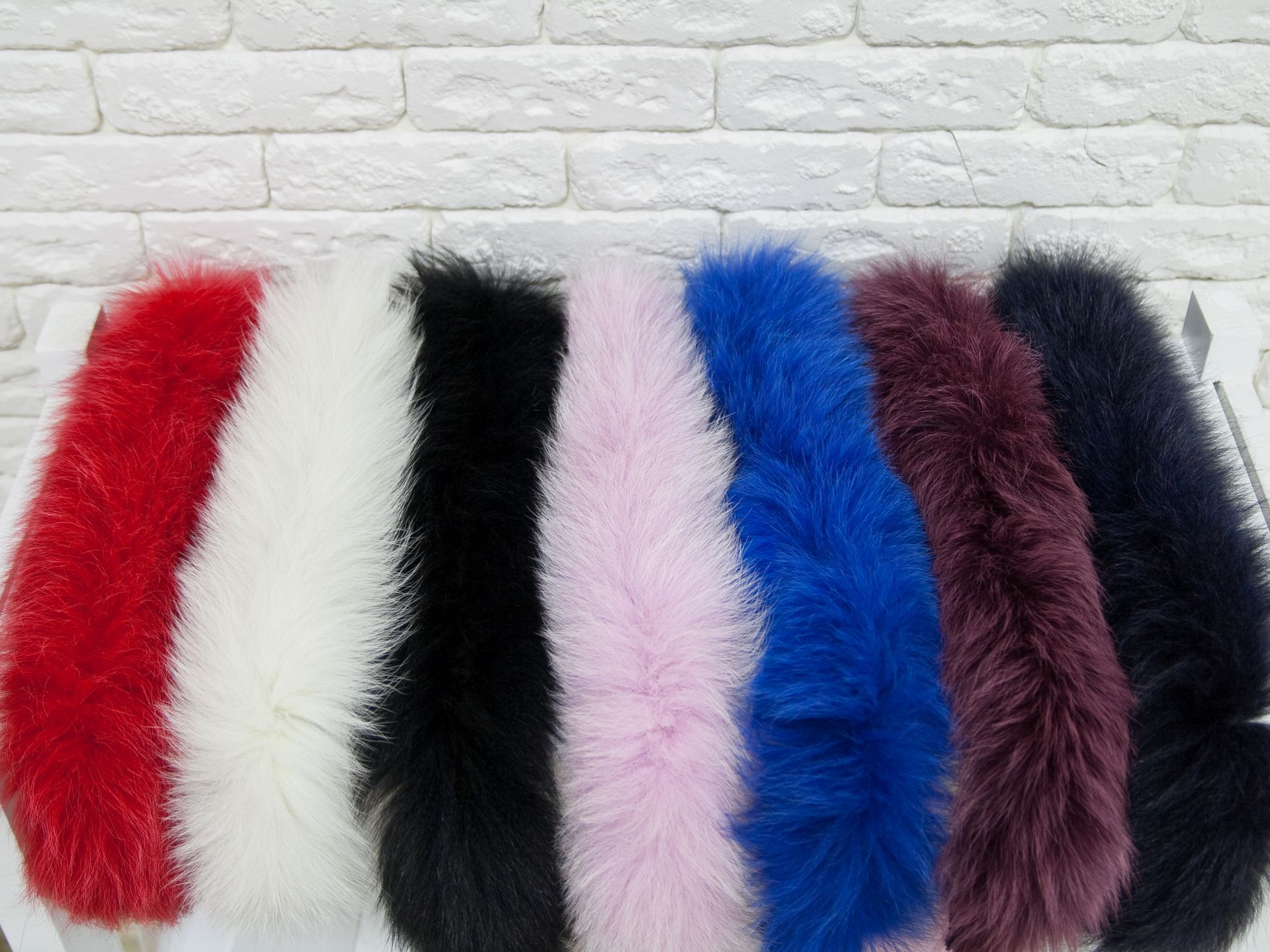Fur dyeing at home
There may be several reasons for dyeing fur. The most common are three:
- The fur is worn out, burnt out and has lost its spectacular appearance;
- You want to sew a product from skins that differ either in color itself or in its shade, but you want to get a solid color product;
- The skin (for example, a collar) is transferred to another thing, on which it looks more impressive in a different color scheme.

In the past, dyeing furs or skins was a daunting task that only professionals took on. For example, because the skins were degreased using a solution of slaked lime, copper sulfate and alum.

And this is a rather aggressive composition that can harm both the person who works with it and the object of work.
Advice. There are now many safer ways to change the color of the fur. Firstly, you can order a painting from a dry cleaner. Secondly, modern tools available in the store make it easy and simple to paint yourself. And we will talk about this further.
General rules for dyeing fur
There are several rules for dyeing fur, which are relevant for all furs of natural origin:
- No fur garment should be dyed when sewn;
- Before painting, you need to degrease the pile and clean it from dirt;
- Mezdra must be lubricated with glycerin;
- Try to stretch the flesh before the staining procedure. If it stretches easily, there is a risk that exposure to chemicals will provoke a loss of lint, in which case it is impossible to dye the skins;
- You can dye your fur in different colors, but keep in mind that it is better to choose a color that is darker than the color of the fur. If you need to make the coat light, then before dyeing the wool must be discolored. The most difficult thing is to repaint black or red fur;
- After dyeing, the fur must be dried in a natural way (without the use of a hair dryer or other heating devices) on a stretch. If the wet skin is not stretched, it will simply shrink in size.

How to dye fur at home
The first stage of staining is cleaning and degreasing. To begin with, we prepare a special solution of equal shares of soda, salt and washing powder (one teaspoon each) per liter of water. It should be applied to the fur with a comb. Then the object of work must be combed out, rinsed under warm water and left to dry completely in natural conditions (do not force events with the help of, for example, a hair dryer!).

Immediately before painting, apply glycerin or just a greasy cream to the skin.
Nowadays, in most cases, modern hair dyes are used to change the color of fur. Don't skimp, choose the highest quality ones. It is important that the shade of the dye is darker than the color of the fur before dyeing.

Some masters recommend using natural ingredients for coloring - henna for red, basma for black. Have you chosen a dye? Read the rules for its use and start staining.

After the paint has fulfilled its function, it must be washed off with warm water. Then a hair balm is applied to the fur. After a few minutes, you need to rinse the skin and from it. The last step is rinsing with water and vinegar. After that, the skin is pulled so that it dries in this position.

Special dyes for fur products
If you use industrial dyes, it will be much more difficult to work on dyeing, but special dyes usually tint the flesh with high quality. As a result, the fur appears much thicker, since the skin is hardly visible between the hairs.

Special dyes are:
- Urzol;
- Pyrocatechol;
- Resorcinol;
- Pyrogallol and many others.
But working with special dyes is much more difficult, since you need to use drums, maintain the required temperature regime and comply with other requirements. Industrial paint for natural fur requires specialized knowledge to apply.

At home, it is not easy to achieve perfectly even coloring with the help of special reagents.
Coloring products
At home it is used:
- Hair dye;
- Hair tinting;
- Suede dye (spray)
- Natural dyes (henna and basma).
The advantages of these products are ease of use and excellent effect. They are not afraid of further contact with moisture and do not fade quickly in the sun.
Features of working with fur of different animals
Different types of fur require a different approach to dyeing or toning. A mink coat requires one approach, while a faux fur coat requires a completely different approach.

The easiest way to dye your rabbit fur. By the way, after that it can look prettier, more elegant and much more expensive. Chinchilla is also easily stained.

Arctic fox interacts well with dyes, but it is difficult to paint because of the density of the pile. The same problems arise if you try to dye the skin of a muton. It is recommended to paint the Arctic fox from an aerosol can, since it mainly burns out the ends of the hair. Spraying paint makes it possible to eliminate this disadvantage.

Mink and silver fox should only be tinted. To do this, you can use paint to match the pile or 1-2 tones darker.
Nutria is poorly stained - it can only be refreshed, like silver fox. The muskrat fur behaves unpredictably, which can turn pink and become stained during the dyeing process.

Dyeing a sheepskin at home is a real flour, since the fur is thick and dense, it is incredibly difficult to dye it evenly. But the sheepskin coat can be freshened, lightened and peeled with ordinary lemon juice.

The raccoon has a very rigid hair structure, so a lot of the reagents themselves will have to be spent to change the color. One cap will take up to 2 packs of paint.
Beaver lends itself to staining, but only in tighter colors. When you try to lighten, this skin turns red.

Wet karakul must be combed out at different stages of work so that the paint evenly covers all curly hairs.
Attention! A fox's fur coat should be painted only in red shades.Extreme colors are obtained only with professional dyeing.
Fur dyeing steps

If you are interested in how to dye arctic fox fur at home, or how to work with other types of skins, remember that the algorithm is always the same:
- Steaming the product (if you have conceived, for example, painting a mink fur coat, then you must first unpick it, dye it, and why sew it).
- Cleansing and degreasing;
- Protection of the flesh with glycerin or fatty cream;
- Coloring;
- Balm treatment;
- Rinsing;
- Drying;
- Kneading the flesh.

The algorithm of action differs only when toning with a spray for suede, it is enough for them to spray on the fur, wait for it to dry, comb the fur.
How to fix paint
To fix the paint, use a special balm present in the package, as well as vinegar. These fixers make the fur softer.

Drying rules for dyed fur
Natural fur is dried only at room or slightly cooler temperatures, but not by the stove, not by a hairdryer, and not at temperatures below 0 ° C.
The skin is stretched on the surface and fixed with cloves - in this position, the skin will dry for about three days.

After both the fur and the flesh are dry, the flesh must be kneaded so that the skin is soft and elastic.
How to dye faux fur
Faux fur should be dyed using a different technique. The structure of the pile of such a fur coat is significantly different from a human hair, there are no cells into which the dye could penetrate. And more aggressive dyes, which should not penetrate the hair structure, but are fixed tightly on its surface, are aggressive in nature, therefore they can react with synthetics and the fur will deteriorate.

Therefore, in order to freshen up fake fur, spray paint is used for velor, nubuck or suede.
How to care for a painted product
The main care is the application of the balm immediately after painting. It deactivates chemical reagents, so the effect on the hairs and on the skin itself will cease. In addition, the balm contains nutrients and fixing components.
And the rest of the skin, fur coat or collar after dyeing does not require special treatment. They will not shed if you fall under wet snow, the staining is quite stable.

Moreover, over time, the staining procedure can be repeated 3-4 times. We wish you success in transforming fur skins or products!
Video: dyeing natural fur at home












